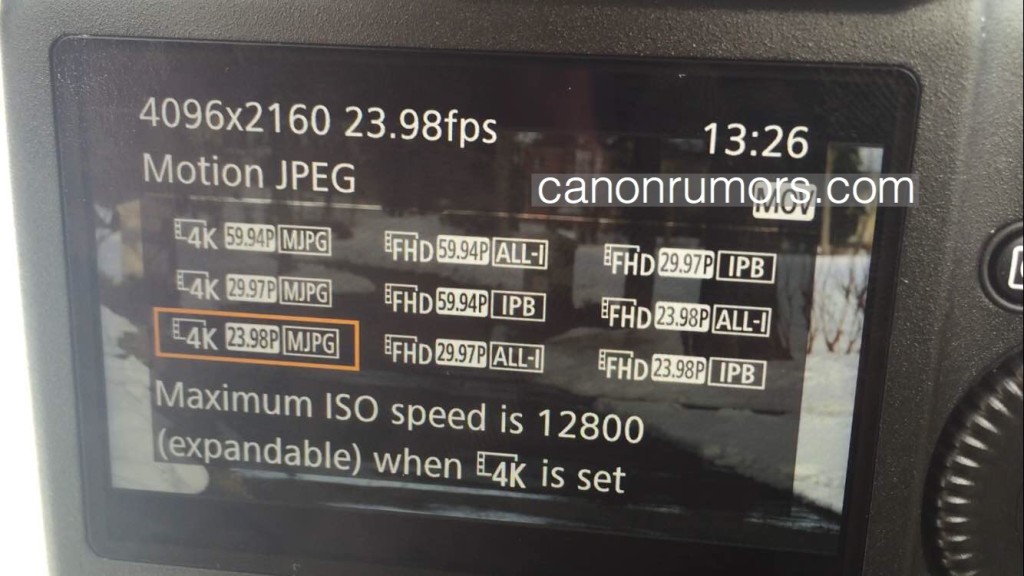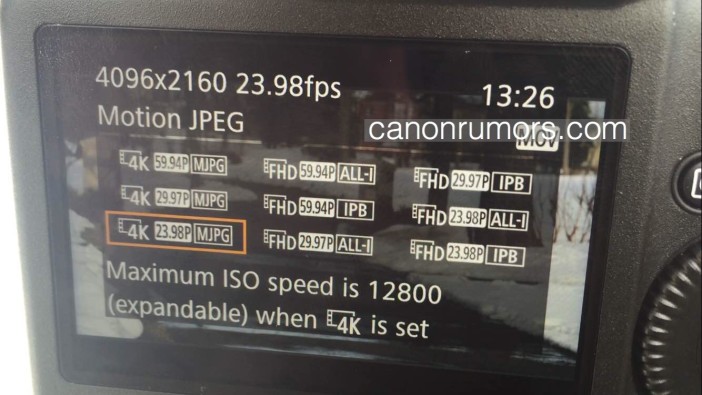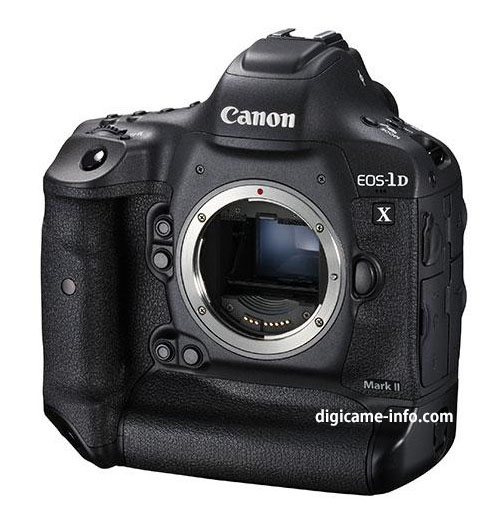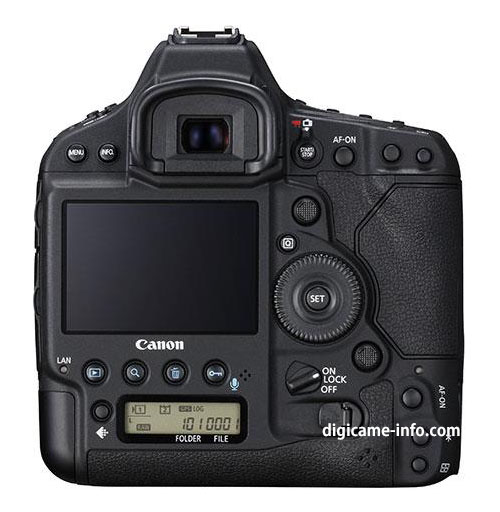Disclaimer: the full specs aren’t out yet and nothing is officially announced
New 1D X Mark II specs (via Canon Rumors) have just come out which reveal it to shoot DCI 4K in MJPEG format (4096 x 2610 and likely 8bit) just like the 1D C. However the maximum frame rate for 4K is now 60p!
However at first glance there appears to be a glaring omission – that of Canon LOG.
At the time of writing 1D X Mark II leaks are all over the internet after Canon were able to keep things extremely quiet for so long. Must be close to release now!
MPEG is a slightly out of place choice by Canon in 2016. It isn’t a codec that offers small file sizes and it doesn’t benefit from hardware acceleration like H.264 and H.265 on modern CPUs or GPUs. Unfortunately editing 4K 60p in MJPEG format will be out of the question without transcoding and proxies. Even an Nvidia GTX 980 with Intel’s fastest prosumer i7 CPU does not playback 4K 24p MJPEG from my 1D C smoothly with colour correction in Premiere.
Like the Nikon D5 the 1D X Mark II features a 20MP sensor versus the 1D C’s 18MP. Low light performance should be very good like the 1D C but the screen shot from Canon Rumors shows a warning that “Maximum ISO speed is 12,800 (expandable) when 4K is set”. I can go higher than this on the 1D C so it seems like a strange cap unless “(expandable)” means you can go to an H1 or H2 setting above that in 4K.
Talking of strange limitations – I am told by Canon Rumors that his source confirmed the lack of Canon LOG on this camera. How bad would it be in reality and is there a workaround? One interesting solution could be to install a custom picture profile like Technicolor CineStyle. I have actually never tried this on my 1D C in the year I have had it – now might be the time to see if it is even possible on a pro Canon body and to see how it performs versus Canon LOG. I may do an upcoming post about this.
A dynamic range improvement also gets a mention in the leaked specs. It is a completely new sensor after all. Whether this is an evolutionary one or a bigger step remains to be seen. At the top end, the Alexa’s dynamic range is achieved by utilising dual amplification on two channels of sensor readout. Two 14bit images at different amplifications are then merged on the image processor to create a 16bit image with at least 15 stop dynamic range. I believe Canon have filed patents regarding a similar dual gain A/D readout for their CMOS sensors in the past. Could we see these swing into action on the 1D X Mark II?
Is the 4K of the 1D X Mark II full frame or a crop?
4K 60p is a welcome feature. It will be the first stills camera to do this. However a 1.5x crop of the full frame sensor would greatly assist this faster readout. Only if a full pixel readout in the region of 5K is employed across the entire full frame sensor and the image scaled down internally will the 1D X Mark II shoot full frame 4K.
If scaling is employed then moire, aliasing and banding could become an issue. The modest increase in resolution to 20MP meanwhile is enough to alter the 1:1 window for 4K video versus the 1D C to a slightly narrower one of around 1.4x compared to 1.3x. 4K video on the Nikon D5 has a 1.5x crop from 20MP because it uses a less wide 3840 pixel width rather than the cinema standard of 4096 pixels.
CFast 2.0 cards are deployed on the 1D X Mark II to handle the high data rates of 4K MJPEG at 60fps and ever increasing burst rates. This now stands at a maximum of 17fps in live-view mode presumably with an electronic shutter. The mechanical shutter isn’t capable of the highest rate. On all previous Canon DSLRs the reverse is true.
One feature I am very pleased to see is the implementation of Dual Pixel AF, as seen on the C100 Mark II.
So far on the basis of the specs I am reasonably excited – but not impressed enough to dump my 1D C for it. A new 1D X Mark II costs more than a used 1D C does and takes much more expensive media. 60p is only a little bit dramatic for slow-mo and editing it will be painful in 4K. For 4K 60p the FS7 is only a bit more money but records in XAVC-I – this is a MUCH less processor intensive codec than MJPEG. The Sony FS5 is also a good slow-mo tool with 240fps in 1080p and is cheaper than both. The only feature I am truly in need of is the Dual Pixel AF. I had really hoped for 4K H.264 on this camera. It may still turn up – let’s keep out eye on the official announcement.
No news yet on whether the 1D X Mark II makes any ergonomic concessions to video beyond the addition of a 7D-style video record button and live view switch.







